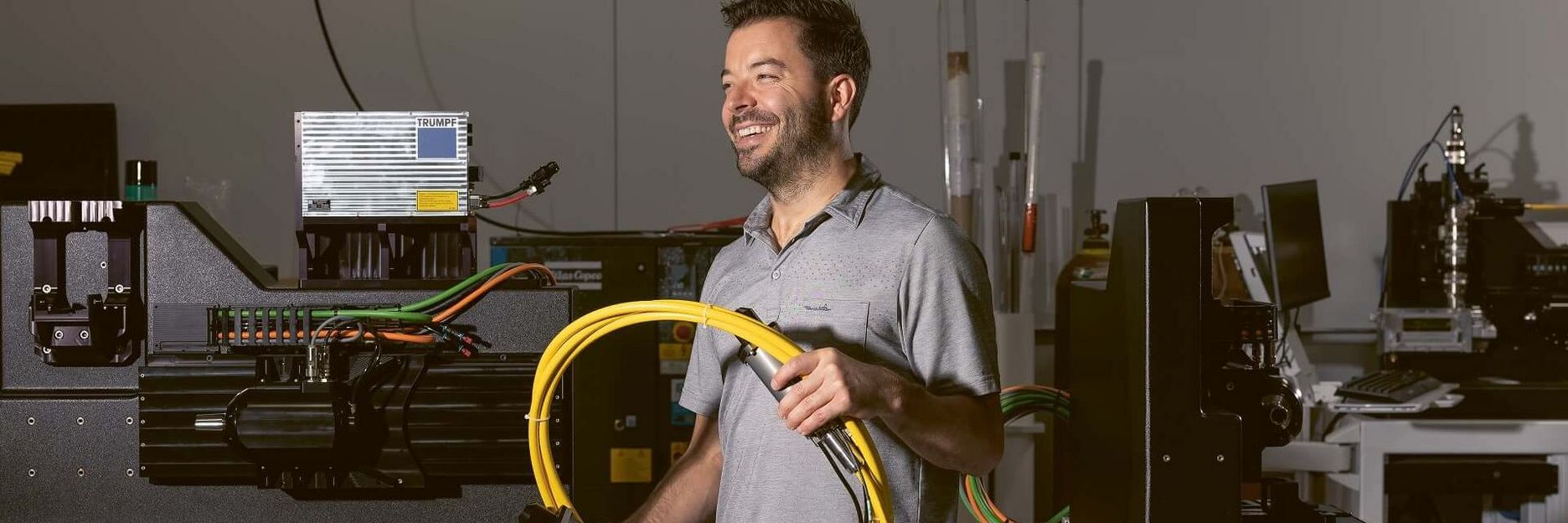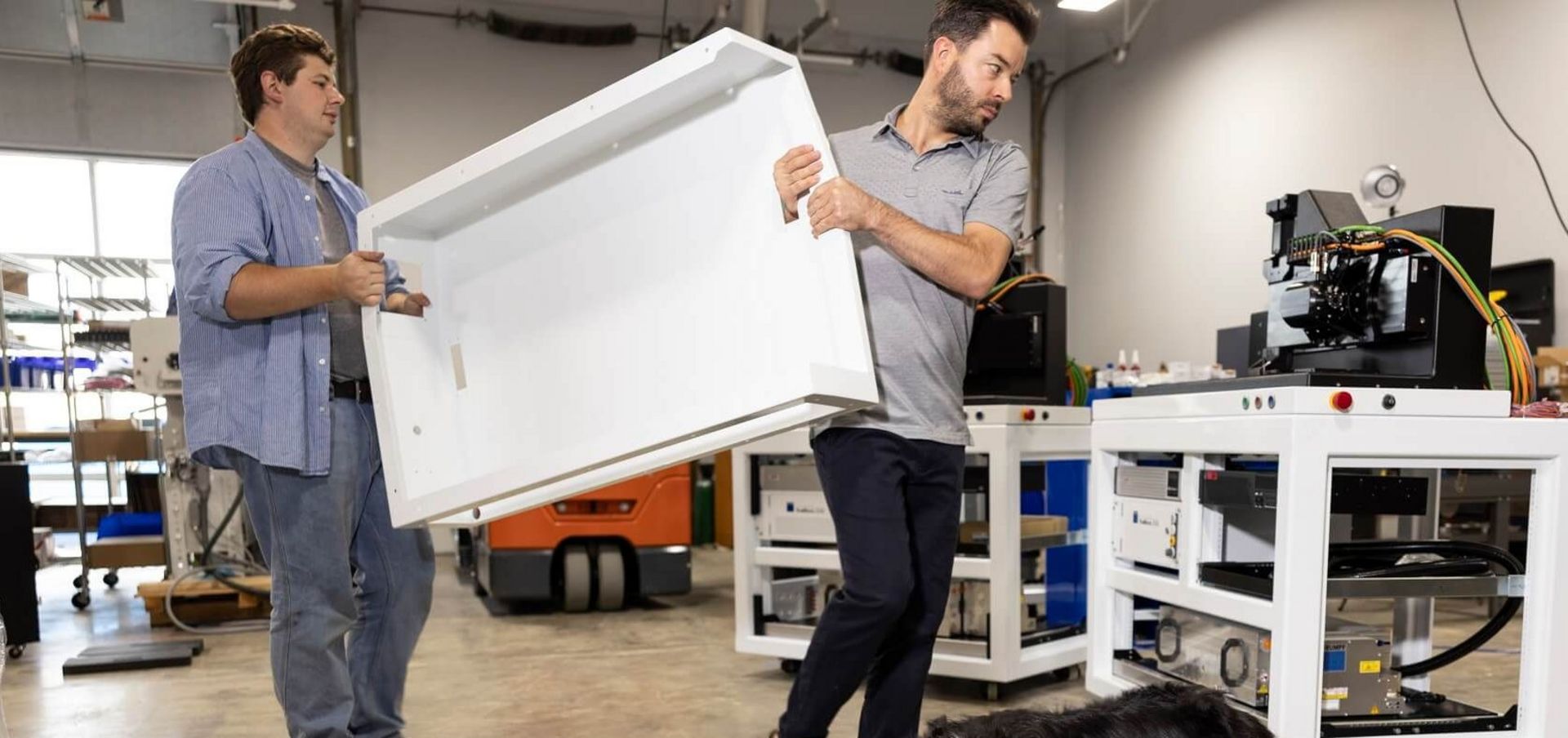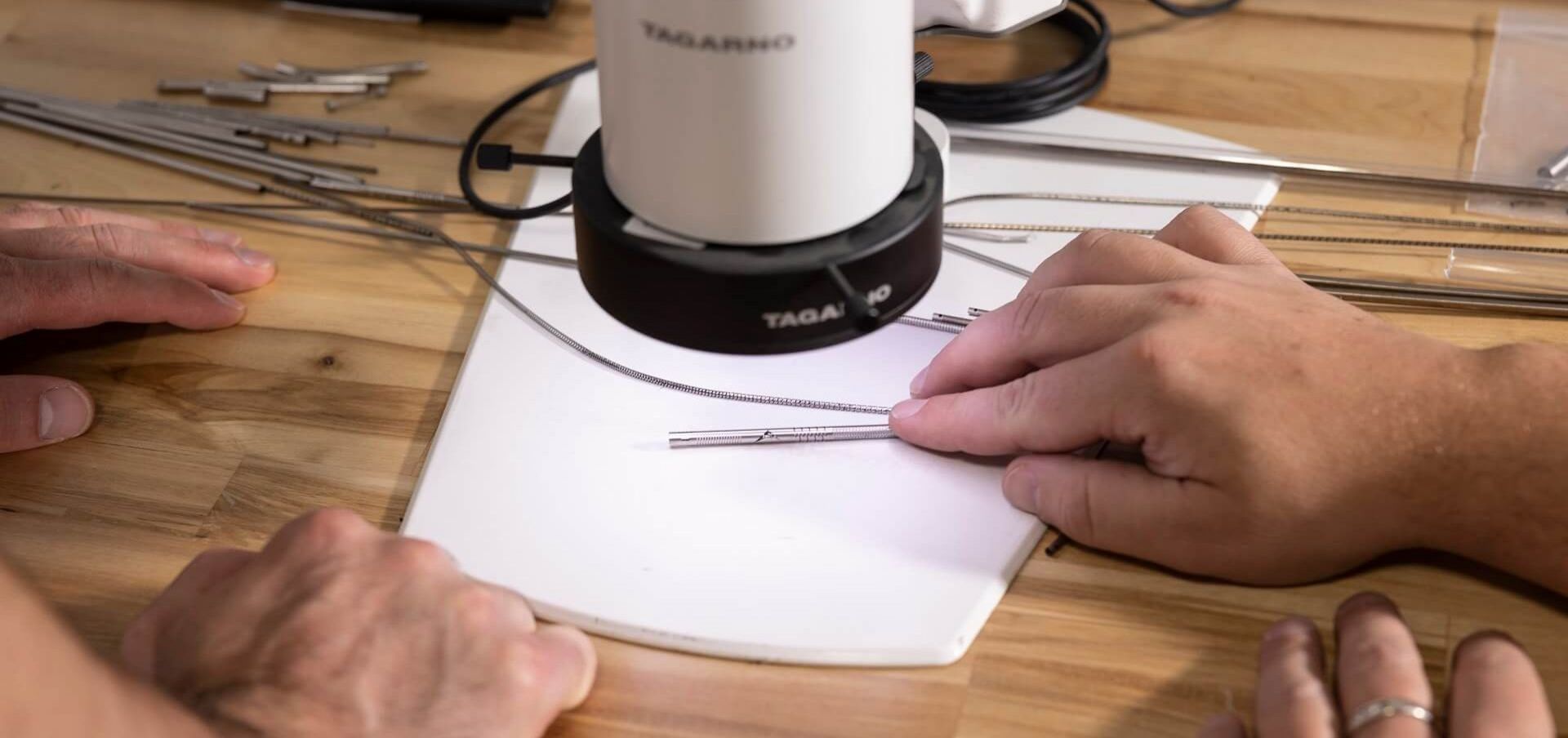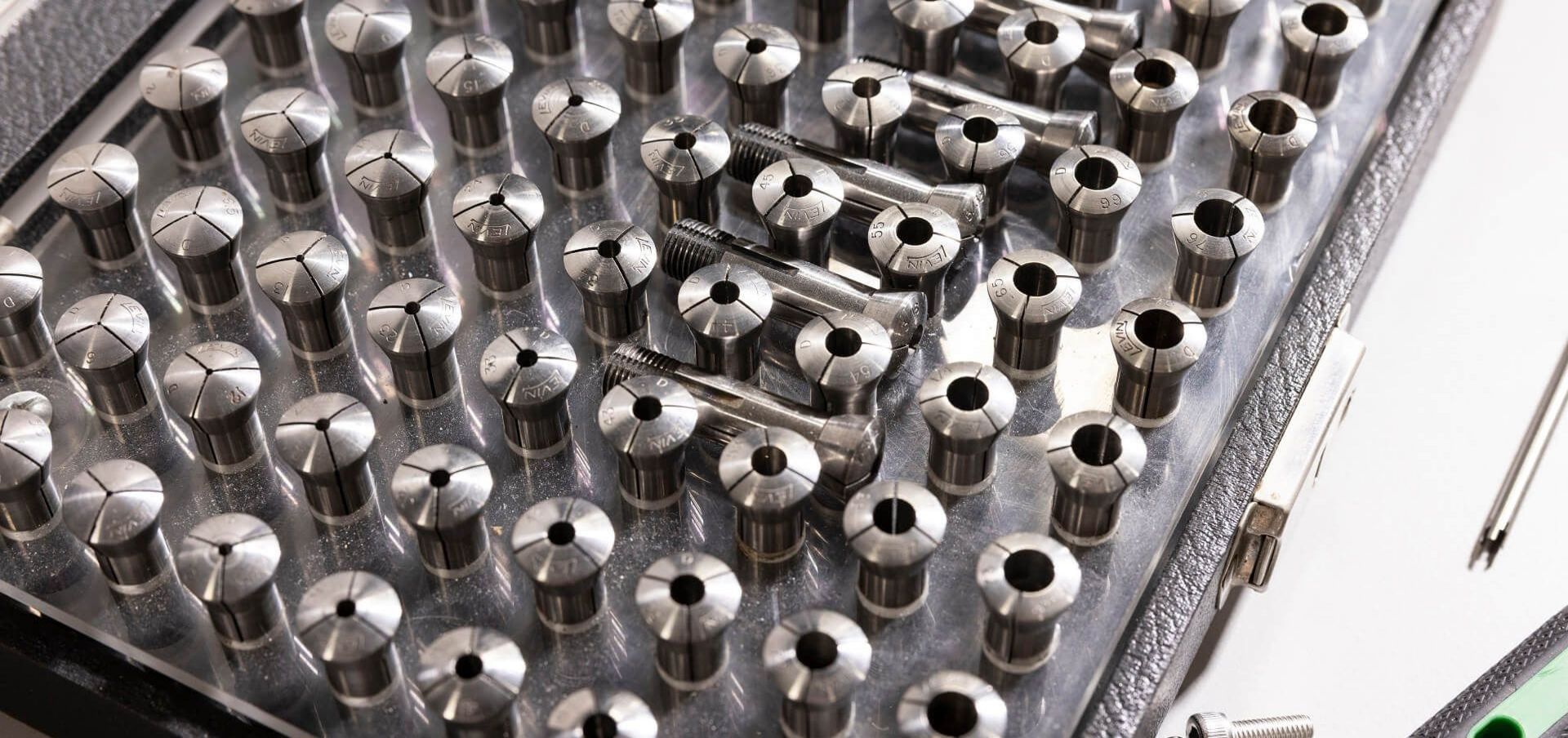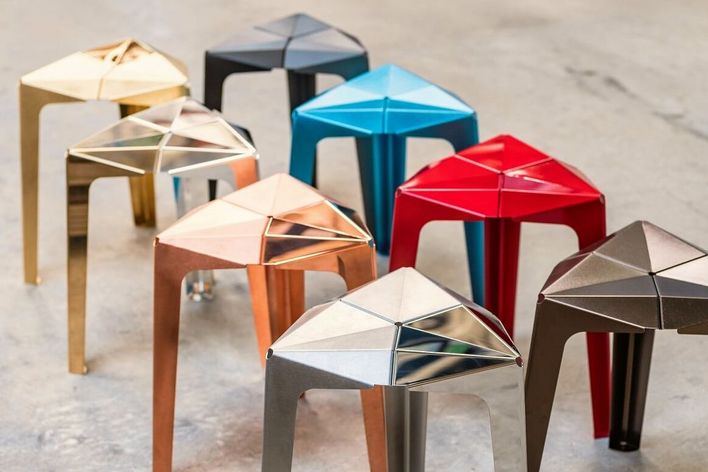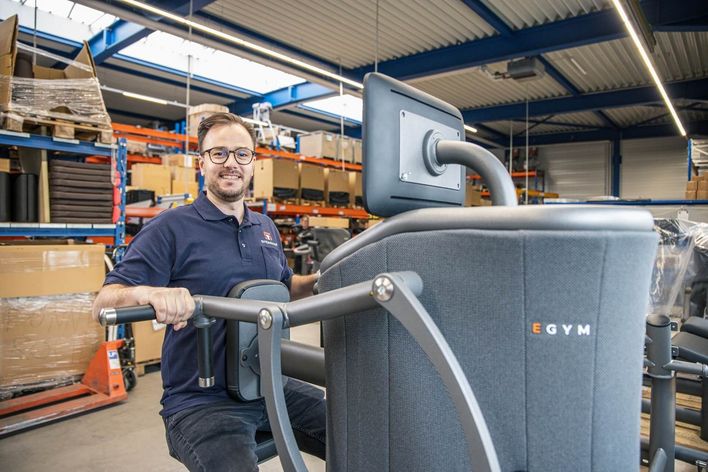Joe Kempf sits comfortably in a swivel chair in the functionally furnished conference room: “The team and I have spent years developing a specialized laser cutting platform specifically for medical tube cutting. Every aspect of the workstation has been optimized to make the machine as efficient and fast as possible, while addressing the technology and usability gaps present in the legacy product offerings.” Confident words from an engineer who quit his regular job in the med-tech industry, scraped together his savings and, together with a partner, founded the start-up Alpine Laser. That was back in 2019.
A capacity bottleneck
With an eye for an opening, Kempf saw a golden opportunity for a new manufacturer of the machines used to make stents and interventional tubular components. Stents are the semi-elastic wire-mesh tubes that surgeons insert into constricted blood vessels to hold them open. In industrialized countries with rapidly aging populations, minimally invasive surgical procedures like these are becoming more and more common and replacing riskier methods. In the U.S. alone, over two million stents are implanted yearly – a number that is growing all the time. What’s more, new therapies are coming to market each year that utilize laser cut tubular components.
Yet Kempf’s plan to produce a machine for manufacturing stents faced a major hurdle: entry into the medical manufacturing market is not an easy process. The medical device market is strictly controlled by regulating bodies around the world. Understandably, the laws and regulations governing quality and certification are extremely rigorous. As a result, the major manufacturers of stent cutting machines have carved up the sector among themselves. “Now the established manufacturers can’t keep up with the rising level of demand, and it’s created a bottleneck,” Kempf explains.
Smaller, faster
Kempf and his team know the medical manufacturing industry. For decades the team at Alpine Laser have been users and operators of this type of equipment. They understand what works, what doesn’t, and what the machines need to do. Over the course of the last 18 months, they have benchmarked their laser cutting system against nearly all other systems on the market. The design of any such machinery always involves a key trade-off: on the one hand, the machine should be easily scalable and thereby allow inexpensive manufacturing; on the other, it should be highly customizable and configurable to individual user requirements. "We realized that a modular design was the only way of combining these two goals,” says Kempf. Alpine Laser came up with a design for a system that would micromachine high-quality components between two and five times faster than conventional machinery. One reason is that extensive effort has been placed in developing robust and flexible tooling – setting up the machine with new part holding and aligning the optics, for example – takes less than five minutes. That’s significantly faster than all previous systems. What’s more, with a footprint measuring a mere 1.2 × 0.7 meters, it is the smallest stent-making machine
in the business.
Of course, one configuration of the machine is fitted with an ultrashort pulse (USP) laser: without a femtosecond laser, it would be impossible to achieve the required smooth edges and tiny struts for tubes with a diameter of 0.25 millimeters and a wall thickness of as little as 0.5 millimeters. Yet, as Kempf explains, USP lasers are not known for being especially flexible: “That could have caused issues with our strategy of developing a modular platform where we can utilize a majority of common system components across all machine configurations; including both USP Lasers and Pulsed CW Fiber Lasers.”
A fiber delivered USP laser
Kempf then discovered that TRUMPF was working on the world’s first fiber delivered USP laser. “We immediately realized that this was key to a modular design.” The new laser light cable is made of a hollow-core fiber. This delivers the USP laser pulses from A to B without any loss in stability. “That meant we could separate the laser source from the cutting optics without having to mount a bulky laser head unit near the processing area,” Kempf explains. “This makes the machine significantly more compact and allows us to standardize our machine design for both USP and Fiber lasers.”
Alpine Laser contacted TRUMPF. The two companies then got together on the development of Alpine Laser’s Medicut Pro. This is the first ever machine to use a USP laser with hollow-core fiber delivery for production on an industrial scale. What’s more, the beam quality delivered by the TruMicro yields a further benefit. “Ultrafast lasers can deliver such clean-cut edges that our customers can produce parts that require, in many applications, no postprocessing with aggressive chemicals,” Kempf explains. “And that removes one significant barrier for device manufacturers; people don’t want to work around hazardous chemicals.”
Boosting output
Having initially hoped for a modest and steady ramp in sales with the launch of this new machine, Alpine Laser has been blown away by the demand. Bolstered by this experience, Kempf is now turning his attention to new USP flat sheet cutting systems for complex laser cut catheter delivery systems. Kempf says, “We feel our job is far from done – we’re just getting started. We have a large list of products in our pipeline that stand to benefit from an Alpine revamp – updating old industry designs with new, more advanced technologies. The team at Alpine will continue to investigate and implement the latest technologies, ensuring that our machines continue to outperform market offerings for years to come.”

